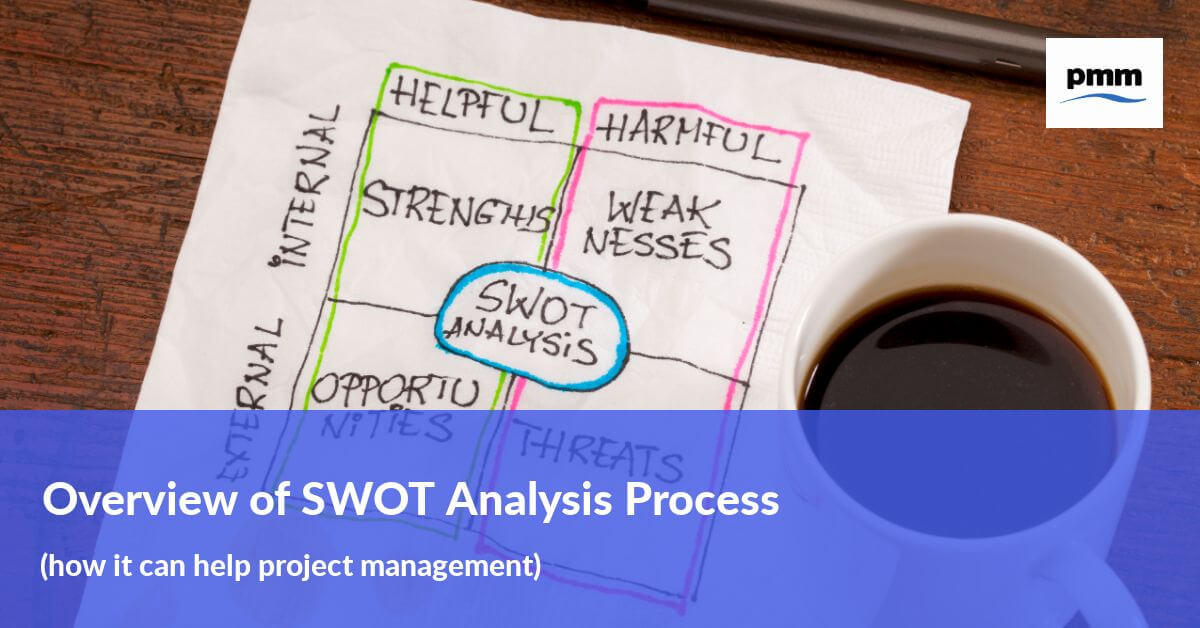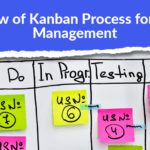Following on from the article, Overview Six Sigma Project Management. This mentioned using SWOT Analysis as part of strategic planning.
This article will provide an overview of the SWOT analysis process and how it can be used in project management.
What is SWOT Analysis
SWOT stands for strengths, weaknesses, opportunities and threats. It is used widely by businesses to aid understanding and decision making. Conducting this analysis will enable you to view your business from a different perspective.
The analysis is usually presented in a two-by-two grid which focuses on strengths and weaknesses, followed by opportunities and threats.
SWOT Template
Strengths
Identify what your business does well and the advantages that it has over competitors. This includes establishing your Unique Selling Point, pinpointing resources available only to you and looking at your strengths from a market perspective.
Weaknesses
Look at what can be improved both from an internal and external perspective.
It is important to be realistic when listing your weaknesses to ensure that you can take steps to rectify them at an early stage.
Opportunities
Identify opportunities in your market that you can exploit. Is there an emerging trend that your competitors don’t seem to be capitalising on?
Opportunities can also emerge from changes in technology, social and lifestyle patterns and government policy.
Threats
Whilst you’re identifying opportunities, remember that your competitors are also doing the same.
Threats can come externally, from competitors, new entrants and quality standards, and internally from cash-flow problems, bad debt and unaddressed weaknesses.
Predominately, strengths and weaknesses are internal factors. They are factors that you have control over and can change.
Opportunities and threats however are external. They represent issues in the market, and whilst you can take advantage of them, you can’t change them.
Who is responsible for the SWOT Analysis?
The great thing about SWOT analysis is its simplicity, allowing for the involvement of staff at all levels of the business. Whilst Senior Management should be heavily involved for it to be effective, it is important to gain a viewpoint of the business from all levels.
How to conduct a SWOT Analysis
The most common, and effective way to conduct your analysis is to hold a brainstorming session. This is a great way to bring your staff together and encourage participation in your strategy.
Alternatively, each staff member can be asked to complete the template individually before meeting to discuss and compile the results.
The simplicity of the tool means that you don’t need to spend all day conducting your analysis. It can be done in a few hours.
Once your discussion is complete, create a final version of the analysis with the factors in each section prioritised from high to low.
Creating strategy
Once you have your analysis, you will want to put it into action to create your short and long-term strategies.
You can do this by conducting a TOWS analysis, identifying how your strengths, weaknesses, opportunities and threats overlap one another.
Examine your strengths firstly against opportunities and then against threats. This will show you how you can maximise opportunities and protect yourself against threats.
Continue this by analysing your weaknesses against opportunities and threats to identify how you can minimise weaknesses and avoid threats.
Advantages and disadvantages
As with any model, SWOT Analysis has its pros and cons.
Advantages
Cost-effective
This simple tool requires no formal training or expensive software, staff simply need to have an understanding of the business, and the process can be as simple using post-it notes.
Flexibility
The tool can be applied to any business in any industry, in many situations.
Allows discussion
When you include staff at all levels in the analysis you acknowledge that everyone plays a part in the business and you empower them to contribute towards its success.
Provides a visual insight
Presenting the SWOT Analysis in the two-by-two square allows a quick overview of your position and gives an insight into the market.
Disadvantages
Subjective
The tool is only as effective as the information entered into it and may be subject to bias based on the experiences of the person contributing.
Prioritisation
The prioritisation of factors is the responsibility of Senior Management, there is no sophisticated software to complete this. Deciding what to address first can therefore be overwhelming.
Excessive opinions
The more staff that are involved, the more opinions there will be to address and add to the matrix. This may result in some opinions being omitted.
Using SWOT Analysis in Project Management
Whilst the SWOT Analysis is usually used from a business perspective, it is also a useful tool to use in Project Management. You can use it to analyse the whole project, or individual stages, and it can help your project come in on time and within budget.
If you are going to use this tool on your project, then it is important to undertake it right at the beginning and include all key members of the project. Whilst a SWOT analysis can be conducted mid-project, this is usually only to reassess.






